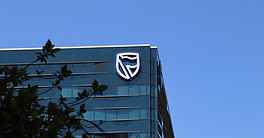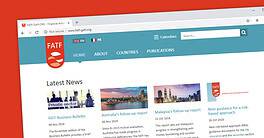
Fueled by a global flood of bond issues, rating agencies are polishing up their act.
As companies and governments lock in low rates, stricter capital requirements mandated by Basel III have raised banks’ lending costs, forcing them to turn away borrowers, who are now raising money on the bond market. During the first nine months of the year, corporations and governments issued $4.5 trillion in debt. That’s a 3% year-on-year increase—higher than any January-September period since 2009, according to Thomson Reuters.
Nevertheless, credit rating agencies are taking a more cautious approach to rating new bonds than they have since the global financial crisis. Standard & Poor’s Ratings Services, the largest rating agency, with 1,400 analysts worldwide, is refusing to rate some deals on grounds that the issuers have too short an operating history and is placing “hard caps” of A or AA on some issuers. So 80% of S&P’s new ratings are B—well below investment grade—says Jayan Dhru, senior managing director for corporate and infrastructure ratings at S&P in New York.
“Credit risk at this period of time actually increases as we are seeing companies out in search for yield,” Dhru explains. “Even though the money is flowing freely right now, we are talking about some of the risks that are out there.”
S&P is one of four large, US-registered global rating agencies that are still struggling to rebuild their reputations seven years after billions of dollars in residential-mortgage-backed bonds that they had rated as investment-grade fell to fire-sale prices in 2007, triggering the global financial crisis of 2008. “Now we have to stick very carefully to what we say we will do,” says Alan Reid, managing director and head of financial institutions and sovereign ratings at Toronto-based DBRS, the smallest of the four.
|
|
|
REGULATORY THREATS
These agencies are struggling to fend off myriad regulatory threats, the most severe of which are leveled at S&P. The US Justice Department has sued S&P for $5 billion, accusing S&P of fraudulently ignoring its own standards in rating residential-mortgage-backed securities before the crisis. Lawrence White, professor of economics at NYU’s Stern School of Business, expects the suit to go to court and drag on for years because the Justice Department is insisting that S&P admit wrongdoing, whereas S&P is loath to hurt its reputation. Egan-Jones Ratings, of Haverford, Pennsylvania, which, like S&P, downgraded the US sovereign credit rating, has been banned from rating government securities for 18 months.
STRATEGIC LINK
For the rating agencies, there’s a strategic link between rebuilding their reputations and fending off regulators. “Regulation is somewhat of a reflection of public sentiment,” says Mark Calabria, director of financial regulation studies at the Cato Institute in Washington, DC. “The more public trust there is in ratings, the less likely regulators are going to move in. That really is the business model.”
For the foreseeable future, regulatory scrutiny over unavoidable conflicts of interest in the agencies’ business models “will only be heightened,” says Calabria. The Dodd–Frank Wall Street Reform and Consumer Protection Act of 2010 requires ratings agencies to provide more transparent disclosure on relationships with their clients. S&P and its largest competitors, such as Moody’s, Fitch and DBRS, charge issuers to rate their bonds—the conflict being that an issuer would be reluctant to pay for a low rating, which would raise the issuer’s cost of funds. In contrast, Egan-Jones does not charge issuers but charges investors for its credit rating and research. But that model too gives rise to conflict: A pension fund would rather not pay for a low rating on a bond that it already owns because it would lower the bond’s price.
Heightened scrutiny has led S&P to invest heavily in risk management over the past couple of years. “Any business model has its conflicts,” says Dhru. “Our job is to make sure we are managing those appropriately.”
The current scrutiny is also raising the cost of entry for new rating agencies. “The industry is under a lot of financial pressure regarding policies and procedures in reporting to the SEC,” says Jim Nadler, chief operating officer of Kroll Bond Rating Agency, which was launched in 2010.
GROWING COMPETITION

But nothing seems capable of stopping competition from mounting in the rating business. The US Securities and Exchange Commission has registered 10 Nationally Recognized Statistical Ratings Organizations—twice as many as there were before the crisis—and several are among the 38 agencies now registered with the European Securities and Markets Authority. Now six agencies rate structured finance products—like the bonds that S&P is being sued over—compared with only four before the crisis, according to Dhru.
So S&P is broadening its horizons, rating more infrastructure bonds and direct bank loans. It even sells research on bank-loan default scenarios. S&P’s market share has “not returned to pre-crisis levels,” Dhru admits. But the surfeit of new bonds helped boost revenue by 11% for the quarter ended June 30, to $664 million.
American banking regulators are also now coming under pressure. Dodd–Frank requires that they withdraw from the so-called regulatory reliance whereby they have traditionally insisted that banks could not hold bonds that were below investment grade as defined by rating agencies. “The regulator was outsourcing its safety-and-soundness judgment to credit rating firms,” White explains.
In the years to come, NYU’s White predicts, this legislation will open up new opportunities for “independent advisory voices” to sell their opinions to banking regulators. But they won’t necessarily be rating agencies, he says. They’re more likely to be financial services firms and academic institutions.



